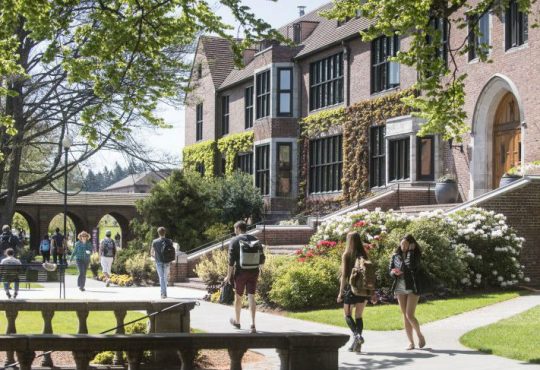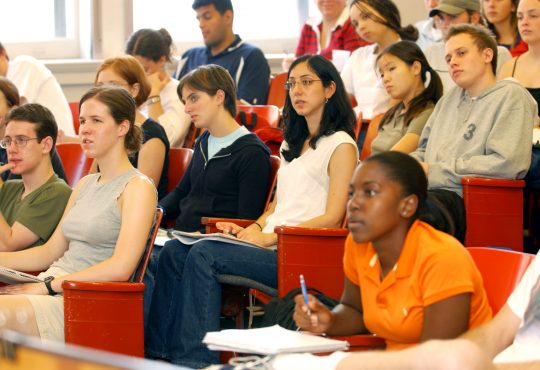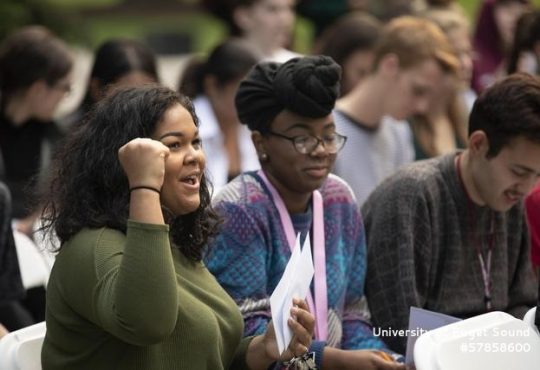By Olivia Langen
While Dia de los Muertos traditionally signifies a day of remembrance and celebration of lost family and friends, the Latinos Unidos club sought to provide a platform for marginalized groups with an altar in the piano lounge.
This altar, organized by Latinos Unidos consisted of student artwork, narratives and photographs from students in clubs including the Black Student Union, the Asian Pacific American Student Union and Queer Alliance.
“We wanted to make a statement this year with the altar,” sophomore and president of Latinos Unidos Amanda Diaz said. “We called it ‘The Death of Diversity’ to represent the voices of marginalized voices on campus. Many of us feel like we are both living and dead at the same time. We have beating hearts, yet we are often treated like we’re dead. We are ignored, we are invisible, we are unimportant. The altar allowed us to celebrate and share our culture with the campus community, but also express our experiences and struggles as students of color.”
Dia de los Muertos is a celebration that was originally coined by the indigenous populations in Mexico and spread throughout Latin America.
“We usually celebrate Dia de los Muertos with an altar commemorating those who have passed in our lives by putting their favorite foods and their favorite activities on altars,” Diaz said. “The indigenous population believed it would attract the spirits of the people who have passed away.”
The historical significance of this holiday is often overlooked by U.S. citizens, as it is observed soon after Halloween.
“A common misconception among people who are unaware of Latino culture is that Dia de los Muertos is like a Halloween for Latinos,” Diaz said. “This is mostly because it’s near Halloween and there’s a lot of skull imagery and mention of death. But really it’s the complete opposite of Halloween. It’s a celebration of life, and it’s a celebration of the people that have left us. It’s a time for you to reflect on who left this world, so we can commemorate them for what they did good in this world.”
Latinos Unidos aimed to use this altar to educate students about the holiday and to spark conversations about the topic of diversity and representation.
“The altar received quite a bit of attention,” co-president of Latinos Unidos and sophomore Andres Chavez said. “Every time I looked, there was somebody observing it. We got a lot of people sharing pictures on Facebook and recommending friends to check it out. Over parents weekend there were many families observing the altar and taking in the display.”
Despite the altar’s primarily positive feedback, Latinos Unidos did experience a set-back when planning the presentation of the Death of Diversity altar.
“When I was asking for the permission to put the altar in the piano lounge, they actually suggested for me to put it by the dish return,” Diaz said. “We were obviously insulted. We felt like they wanted to put our culture in the trash, along with the rest of our feelings.”
The altar provided an outlet for students across campus to express their experience with diversity and the feeling of being marginalized on campus.
“Our campus is constantly speaking of how much it values diversity,” Chavez said. “However, they only like to show that when it’s application time, when they’re trying to get students or talking to trustees and parents. The suggestion to place an altar for the death of diversity next to a dish drop shows how much we really value diversity.
“To me, Dia de los Muertos signifies not only those who have influenced me in my life, but also the many struggles that our people have experienced over hundreds of years,” Chavez said. “I am very proud of the feedback we got from this altar. It definitely started some important conversations.”




